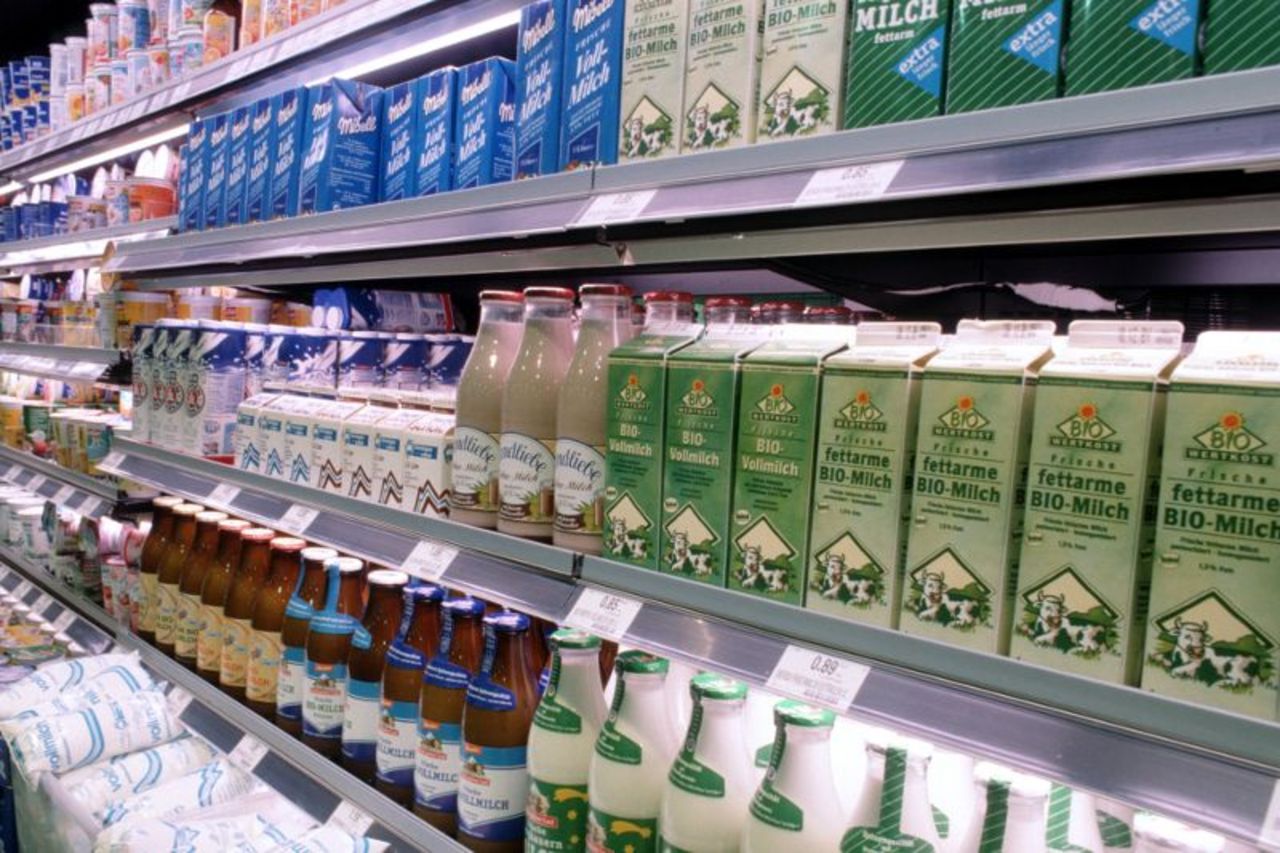Project
Pricing in dairy markets: who dictates and who reacts?

Price Formation on Dairy Markets: Who determines and who reacts?
The world is global – and the milk market too. What happens in Germany, if a "milk can" tips over in New Zealand? How are producer prices and how are price for consumers determined?
Background and Objective
With the withdrawal of EU agricultural policy from direct control of markets, price fluctuations at world markets can directly affect the German milk and dairy markets. This new development has consequences for the price formation in the dairy supply chain – beginning from milk producers, milk processors and retailers up to consumers. But who benefit and who loses under this new policy?
Our analysis show how price signals are transmitted from one stage to the next stage to draw conclusions about the organizational structure of the dairy value chain. This work helps to understand the market power and the exploitation.
If we understand the principles of price formation in a value chain, we can properly assess what possible consequences policy changes have. Results from this project are used to better advise the policy in the area of milk and dairy.
Approach
Long-term time series on German, European and international prices are the base of our work. In our analysis we cover the main dairy products, such as butter, cheese, skim milk and whole milk powder.
Raw milk is processed to various dairy products which do not stand alone, but are connected through complementary or substitutive relationships in different markets. These market interactions need to be captured in our comprehensive analysis which contributes to a better understanding of domestic and international markets for milk and dairy products.
Results
Our preliminary results indicate that the pricing in the German dairy supply chain has changed significantly under the reform of EU agricultural policy: The world market became more important while the influence of milk producers has decreased.
Involved Thünen-Partners
Duration
4.2011 - 12.2021
Publications
- 0
Weber SA, Geiger K (2020) Einfache Lösungen? Gibt es nicht! : Milchpreise stabilisieren [Interview]. Maschinenring Mag(1):46-47
- 1
Weber SA, Banse M, Knuck J (2019) Markt bleibt Markt. DLG Mitt(6):42-45
- 2
Banse M, Knuck J, Weber SA (2019) Stabile und hohe Milchpreise?! - Optionen für eine Beeinflussung der Milchpreise. Braunschweig: Johann Heinrich von Thünen-Institut, 28 p, Thünen Working Paper 118, DOI:10.3220/WP1549288041000
- 3
Rothe A, Weber SA (2018) Evaluierung über die in Deutschland erfolgte Umsetzung der Milchmengenverringerungsmaßnahme sowie der Milchsonderbeihilfe. Braunschweig: Johann Heinrich von Thünen-Institut, 110 p, Thünen Working Paper 88, DOI:10.3220/WP1520859217000
- 4
Weber SA (2015) EU-Milchmarkt auf dem Weg in die Freiheit : Umgang mit Preisrisiken stellt Erzeuger vor Herausforderungen. In: Trendbuch : Innovative Agrarwirtschaft 2015. Frankfurt a M: Deutscher Fachverl, pp 13-16
- 5
Weber SA, Koch J (2015) Nur noch mehr Bürokratie [Interview]. DLZ Agrarmag(2):23
- 6
Weber SA, Salamon P, Hansen H (2013) Volatile Weltmarktpreise von Milchprodukten und ihr Einfluss auf die nationale Preisbildung: Der deutsche Käsemarkt. Landbauforsch Appl Agric Forestry Res 63(2):103-114, DOI:10.3220/LBF_2013_103-114
https://literatur.thuenen.de/digbib_extern/bitv/dn052237.pdf
- 7
Weber SA, Salamon P, Hansen H (2012) Volatile world market prices for dairy products - how do they affect domestic price formation: the German cheese market : paper prepared for the 123rd EAAE Seminar Price Volatility and Farm Income Stabilisation ; Modelling Outcomes and Assessing Market and Policy Based Responses, Dublin, February 23-24, 2012 [online]. Dublin: EAAE, 17 p, zu finden in <http://purl.umn.edu/122542> [zitiert am 26.06.2012]

![[Translate to English:] [Translate to English:]](/media/_processed_/3/e/csm_AdobeStock_249730128_92f14d3a63.jpeg)
![[Translate to English:] [Translate to English:]](/media/_processed_/3/e/csm_AdobeStock_249730128_a6fcf4c893.jpeg)

![[Translate to English:] Logo des Bundesministerium für Ernährung und Landwirtschaft](/media/allgemein/logos/BMEL_Logo.svg)